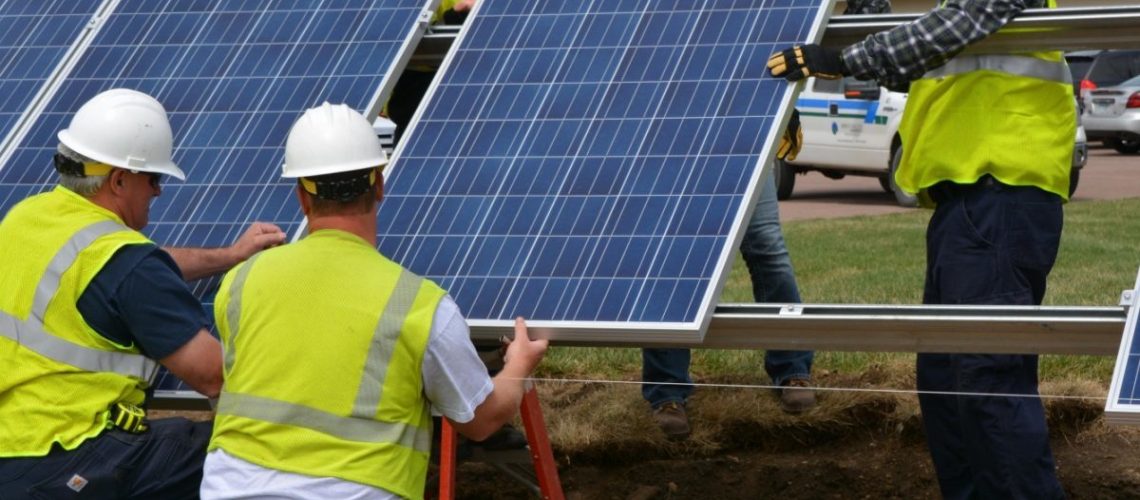The state has just 2 MW of installed solar capacity, but its integrated resource plan includes 120 MW of clean energy resources by 2025, which includes 100 MW of wind or solar generation, and 20 MW of energy storage divided equally across the two states.
South Dakota, home of the Badlands, Mount Rushmore, roaming buffalo and the Sioux Native American Tribe, could conjure images of supple rolling hills ideal for ground-mounted solar panels. But the land ranks last in the nation for solar development in terms of active capacity. South Dakota has less solar installed than Alaska, which sits at a higher latitude, according to the Solar Energy Industries Association (SEIA).
The Dakotas are historic coal and natural gas regions, where one of its major utilities, Black Hills, now operates 1.48 GW of generation assets, of which 27% is coal-fired, 51% is oil and gas, and 19% is wind power, compared to a decade ago when its fleet was 63% coal-fired. But Black Hills’ South Dakota and Wyoming Integrated Resource Plan now includes 120 MW of clean energy resources by 2025, which includes 100 MW of wind or solar generation, and 20 MW of energy storage divided equally across the two states.
According to SEIA, South Dakota is projected to add 246 MW of solar resources over the next five years, though that momentum is still may not move the needle compared to other states across the Midwest and Midcontinent region as state has seen just $5 million in aggregate investment in recent years.
South Dakota generated 3.22 GW of renewable energy in 2021, ranking the state 23rd in the country thanks mainly to its abundant wind resources, with 54% of its electricity from renewable energy resources, according to the American Clean Power Association. Solar, however, exists just a few select pockets of the state, with the greatest solar resources in the southwest corner. Just half of its current 2 MW solar generation is from customer-sited and small-scale systems.
Incentives
Like North Dakota and Montana, South Dakota no longer has an active renewable portfolio standard (RPS). Its previous RPS expired in 2015 and has since not been renewed. The former RPS called for just 10% of the state’s retail energy mix to come from renewable energy such as wind, solar or biomass.
Although the state does not have a net metering mechanism, property owners could see some relief when it comes to taxes. South Dakota offers a property tax credit for homeowners who have installed solar panels. The property tax allows for the exemption of real property tax on the first $50,000 or 70% of the assessed value of the solar system, whichever is greater.
Some solar companies have the option of offering net metering, though it is currently not mandated by the state.
Notable project
Located in Hughes County, the Pierre Solar Farm is the state’s lone utility solar project, generating 1 MW of electricity, enough to power over 134 South Dakota homes. Municipal utility cooperative Missouri River Energy Services has purchased power from the solar array built in October 2016 by Geronimo Energy, now a part of National Grid Renewables. The facility utilizes 30-degree fixed tilt solar panels, with 4,284 multi-crystalline 315-Watt panels installed over 8.9 acres using 42 24kW string inverters, according to the local utility’s website.
In September 2022, Greenbacker Renewable Energy raised $186 million in debt facilities for the construction of two solar projects, one of which is Fall River Solar, a proposed 80 MW facility in Fall River County, S.D. Fall River had been the subject of litigation over the avoided cost of the project related to Black Hills, with litigation between developer Energy of Utah, LLC and Black Hills related to the avoided cost of the project dating back to 2016. Despite the utility’s purchase of the Fall River project, then at 52 MW nameplate capacity, the utility abandoned plans for construction of the facility by mid-2019.
The revamped Fall River Solar project at 80 MW comprises 80% of Black Hills’ multi-year renewable energy portfolio of 100 MW of new projects in South Dakota and Wyoming. The Greenbacker and Borrego project is anticipated to become operational in early 2023.
Community solar
With six investor owned utilities and more than 24 rural electric cooperatives, community solar represents an option for providing low-cost clean energy to its population of 895,000.
One electric cooperative, Sioux Valley Energy, is planning to a community solar array that will be located at the Colman, SD service center. The array will use 140 panels with a total capacity of 60 kW. Members of the cooperative will be able to purchase the output of one or more panels for $1,000 over a 20-year subscription where the output will be credited to their monthly electric bill. Sioux Valley Energy services nine towns in southeast South Dakota and seven towns in western Minnesota.
Black Hills Energy currently has its own community solar developments in the works in Colorado, but has not yet stated plans for community solar in its South Dakota service territory. Calls to Black Hills’ media group were not returned as of publication.
The utility provides electric and gas services to 1.3 million customers in eight states, and has plans of reducing electric power emissions by 70% by 2040, thanks to the conversion or retirement of additional coal-fired resources. Through 2021 the utility achieved 33% emissions reductions by retiring 123.3 MW of coal and adding 289 MW of wind power resources. The utility has set a goal of achieving net zero emissions across its gas infrastructure network by 2035 by replacing its gas pipeline, using carbon capture systems and leak detection.
Up next
Last week, pv magazine reviewed the state of solar in North Dakota. Next up we will review the solar market in Minnesota.



